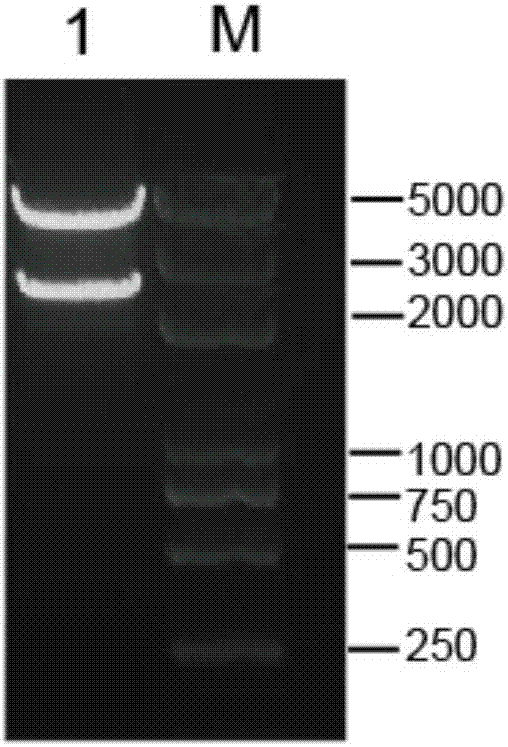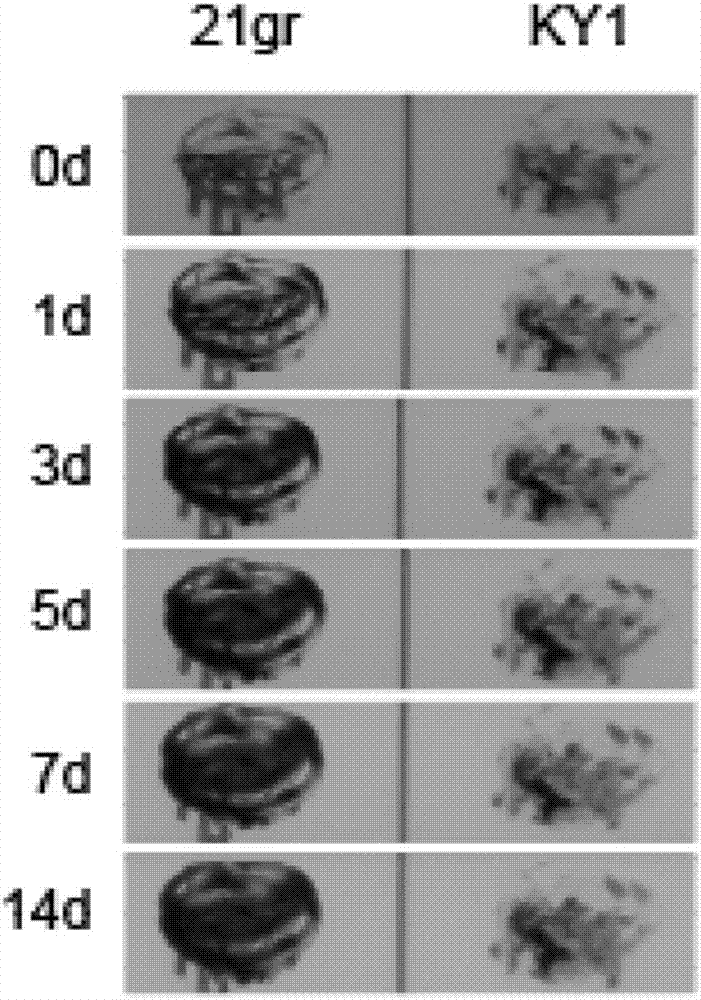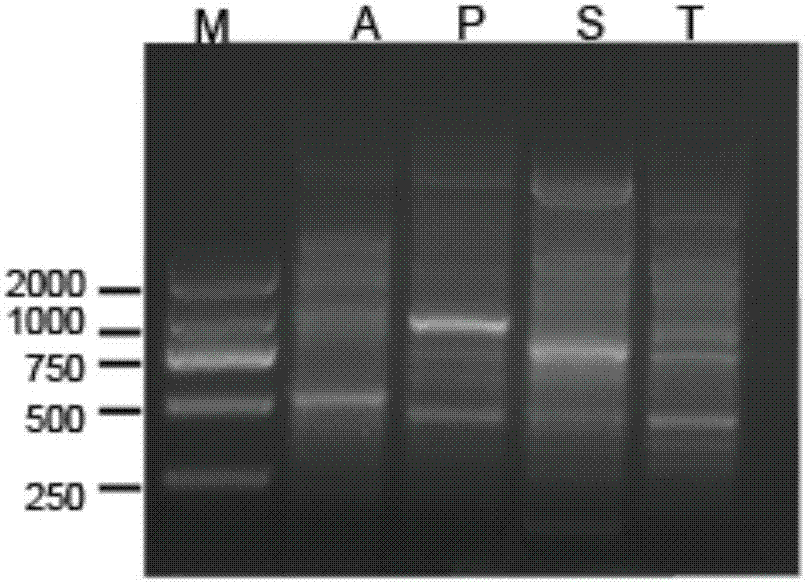Application of Chlamydomonas reinhardtii g3280.t2 gene for regulating and controlling cadmium tolerance of Chlamydomonas reinhardtii
A reinhardtii coat and tolerance technology is applied in the application field of the Chlamydomonas reinhardtii g3280.t2 gene in regulating the cadmium tolerance of Chlamydomonas reinhardtii, and can solve the problems of reducing urinary cadmium excretion, irritation, toxicity of heavy metal cadmium and the like, Achieving high efficiency, simple method and remarkable sensitivity
- Summary
- Abstract
- Description
- Claims
- Application Information
AI Technical Summary
Problems solved by technology
Method used
Image
Examples
Embodiment 1
[0033] Example 1 The acquisition of Chlamydomonas insertion mutants
[0034] (1) Pick 21gr of wild-type Chlamydomonas reinhardtii algae strains in good growth state on the TAP solid medium to a blowing bottle equipped with TAP liquid medium, and cultivate under continuous light conditions to a concentration of 1 × 10 7 / mL and transferred to a 250mL sterile shaker flask, diluted with liquid TAP to a cell concentration of 1×10 6 / mL, cultured under continuous light on a shaker for 24 hours, to a final concentration of 4×10 6 / mL.
[0035] (2) Digest pJMG-aphⅧ plasmid with EcoRI-HF enzyme (Zhangfeng Hu, Yinwen Liang, Wei He, Junmin Pan * , Cilia Disassembly with Two Distinct Phases of Regulation, CellReports, 2015, 10(11):1803-1810), to obtain the aphⅧ fragment (sequence shown in SEQ ID NO: 3), which contains the Paromomyces resistance gene. The aphVIII fragment was then recovered by agarose gel electrophoresis. Such as figure 1As shown, M is DL5000 DNA Marker, 1 is the sam...
Embodiment 2
[0039] Example 2 Acquisition of Cadmium Chloride Sensitive Mutant Algae Strains
[0040] (1) According to the applicant's previous research results, 0.4mM cadmium chloride is the optimal concentration for screening sensitive mutant algal strains (see patent 201611022254.9 for details). When the transformants on the TAgP solid medium were cultured for about 3 days under the photoperiod, apply one-to-one corresponding numbers on the TAgP solid medium with 0.4mM cadmium chloride, culture under the photoperiod, and observe the state of the transformants. If the transformants On the 0.4mM cadmium chloride medium, it can not grow normally but the wild type can grow normally, so it is preliminarily considered that the mutant is a cadmium chloride sensitive mutant strain.
[0041] (2) Repeat the screening several times, inoculate nearly the same amount of wild-type algal strain 21gr and the initially identified cadmium chloride-sensitive mutant algal strain on the TAgP medium of 0.4mM...
Embodiment 3
[0042] Example 3 Acquisition of Insertion Mutation Gene and Mutation Site of Sensitive Mutant Algae Strain KY1
[0043] (1) Pick the mutant algae strain KY1 in good condition on the TAP solid medium into a gas blowing bottle filled with TAP liquid medium, and culture it with ventilation until the cell concentration is 4×10 6 / mL, the cells were collected, quick-frozen in liquid nitrogen, and stored at -80°C for later use.
[0044] (2) Genomic DNA of collected KY1 algae strains was extracted by CTAB method.
[0045] (3) Design specific primers F-Z2 and F-Z8 according to the nucleic acid sequence of the insert fragment aphⅧ, and design primer Q0 and the specific recognition sequence composed of Q0 and AluI, PstI, SacII, TaqI restriction endonucleases according to the characteristics of Chlamydomonas genome Degenerate primers DegAluI, DegPstI, DegSacII, DegTaqI. Using the extracted genomic DNA of the KY1 algae strain as a template, RESDA-PCR was performed to obtain four PCR pro...
PUM
 Login to View More
Login to View More Abstract
Description
Claims
Application Information
 Login to View More
Login to View More - R&D
- Intellectual Property
- Life Sciences
- Materials
- Tech Scout
- Unparalleled Data Quality
- Higher Quality Content
- 60% Fewer Hallucinations
Browse by: Latest US Patents, China's latest patents, Technical Efficacy Thesaurus, Application Domain, Technology Topic, Popular Technical Reports.
© 2025 PatSnap. All rights reserved.Legal|Privacy policy|Modern Slavery Act Transparency Statement|Sitemap|About US| Contact US: help@patsnap.com



